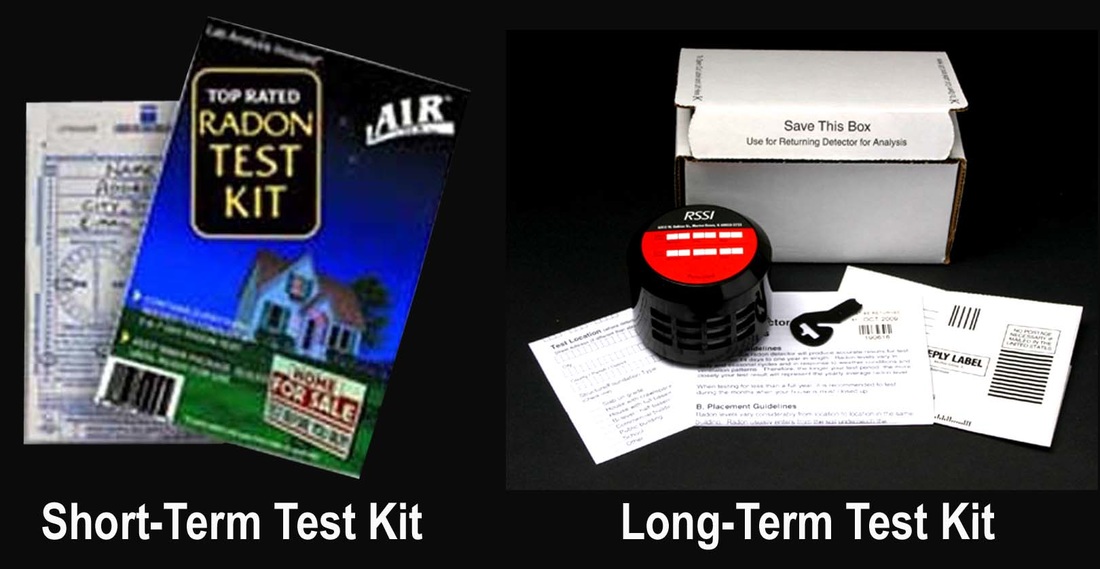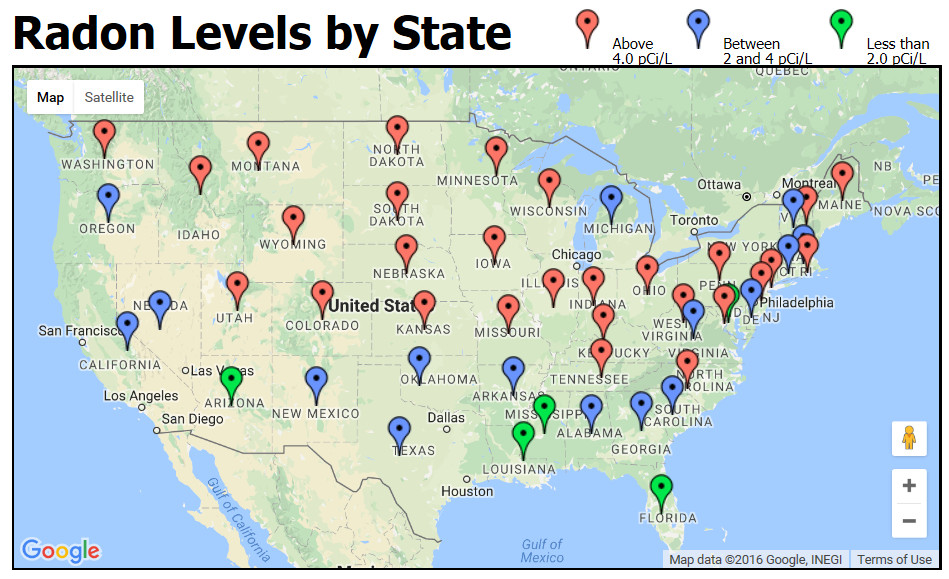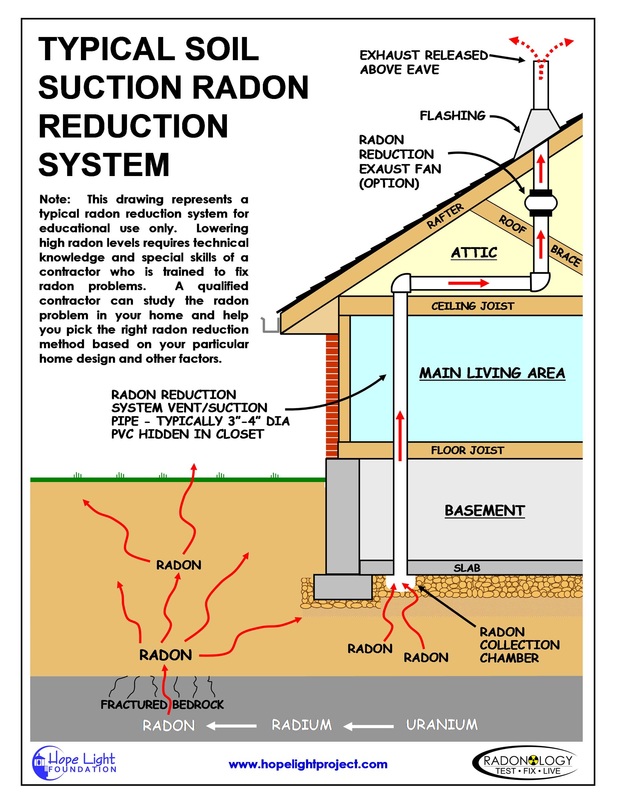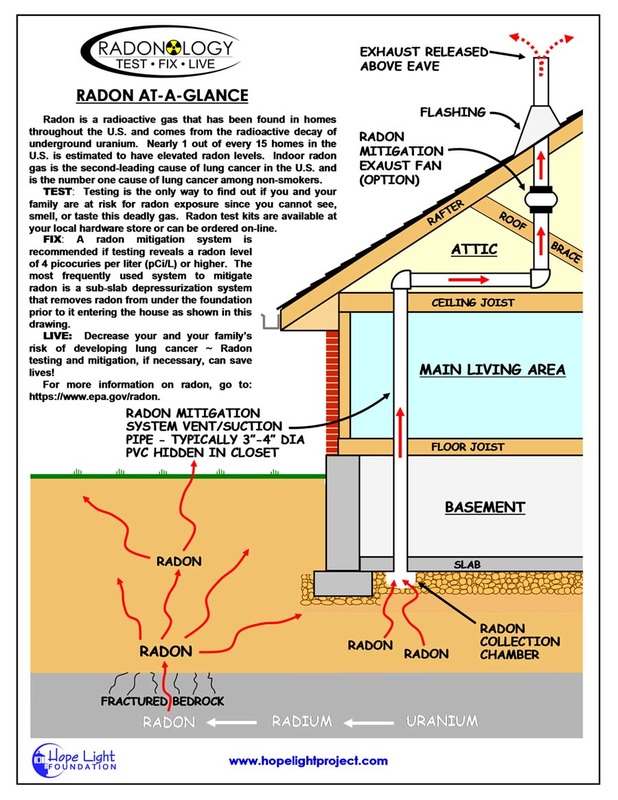"Radon is a naturally occurring radioactive gas that can cause lung cancer" Per the EPA
You can’t see, smell nor taste radon gas. Testing is the only way to know your level of exposure.
About Radon
Radon is a radioactive gas that has been found in homes throughout the United States. Nearly 1 out of every 15 homes in the United States is estimated to have elevated radon levels. Indoor radon gas is the second-leading cause of lung cancer in the U.S. and is the number one cause of lung cancer among non-smokers.
Radon is an invisible, odorless and tasteless gas that seeps up from the ground and disperses into the air. Radon comes from the breakdown of uranium in soil, rock and water and can enter a home through porous building materials or leaks in a foundation. If you are breathing in too much radon, you may not feel sick nor have any symptoms right away. Radon gas contains radioactive particles which get trapped in your lungs every time you breathe. As the radon gas particles break down, they release bursts of radiation that damage or destroy your lung tissue and may cause lung cancer. The serious health risks exists in confined air spaces such as a house with inadequate ventilation that results in increased radon levels and a greater risk of developing lung cancer. Testing your home is the only way to find out if a radon exposure problem exists. The EPA believes that any radon exposure carries some risk — There are no safe levels of radon! About Radon TestingTesting your home for radon is very easy and inexpensive. You can test for radon yourself or hire a professional to do it for you. If you rent your home, ask your landlord to get it tested.
Numerous kinds of low-cost “do-it-yourself” radon test kits are available that you can either purchase from a local hardware store or order online. Depending on where you live, you may qualify for a free testing kit. There are two categories of radon air tests, i.e., short-term and long-term. Short-term radon tests are the most common and convenient. They measure radon levels for a period of 2 to 7 days, depending on the device. Long-term radon tests measure radon levels for 90 days to one year and gives test results that are more reflective of seasonal or year-round average radon levels in your home. Homeowners should use a short-term test first. If the initial test result is 4 picocuries per liter (4pCi/L) or higher, follow-up with a second short-term test. The higher your initial short-term test result, the more certain you can be that you should take a second short-term test rather than a long-term follow up test. If your first short-term test result is more than twice EPA’s 4pCi/L action level, you should take a second short-term test immediately to confirm the results and take action to mitigate radon exposure. Whatever radon test kit you obtain, make sure it meets the Environmental Protection Agency's (EPA) testing requirements. Where to purchase Radon Test Kits? Click on the below radon test kit illustration to order a short-term ($14.95) or long-term ($25.95) Radon Test Kit from Air Chek, Inc and to see how easy they are to use. Short-term kits take 3 to 4 days for the test and long-term kits take 3 to 12 months for the test. Just follow the instructions on the package and return the kit to the manufacturer for analysis and a report at no extra charge.
Radon Levels by State. Click on the below map to find radon levels in your state and county and state-specific contact information for radon officers and state radon resources.
|
About Radon Reduction
A radon reduction system is recommended if testing reveals a radon level of 4 picocuries per liter (pCi/L) or higher. The most frequently used system to reduce radon is a sub-slab depressurization system, aka soil suction radon reduction system, that removes radon from under the foundation prior to it entering the house as shown in the following drawing.
Once your home has been fixed, you should test it again to be sure that radon levels have been reduced. Similar to furnaces, air conditioners and chimneys, radon reduction systems need periodic maintenance. If you have a fan powered (or active) system, you should look at your warning device, usually a manometer, on a regular basis to make sure the system is working correctly. Fans never should be turned off; they need to run continuously in order for the system to function properly. Normally, fans last five years or more. In addition, you should retest your home every two years to ensure radon levels remain low.
Radon Information Resources
Radon and Cancer: http://www.cancer.gov/about-cancer/causes-prevention/risk/substances/radon/radon-fact-sheet#q1 (NCI)
Radon Testing and Mitigation: https://www.epa.gov/radon (EPA) Radon Levels and Test Kits: http://www.radon.com/ (Air Check, Inc.) Radon Information At-A-Glance: Click on the below information sheet to obtain a PDF file copy for your use and to share with others. Feel free to copy and/or post electronically and distribute copies as required to increase radon awareness and save lives. |





